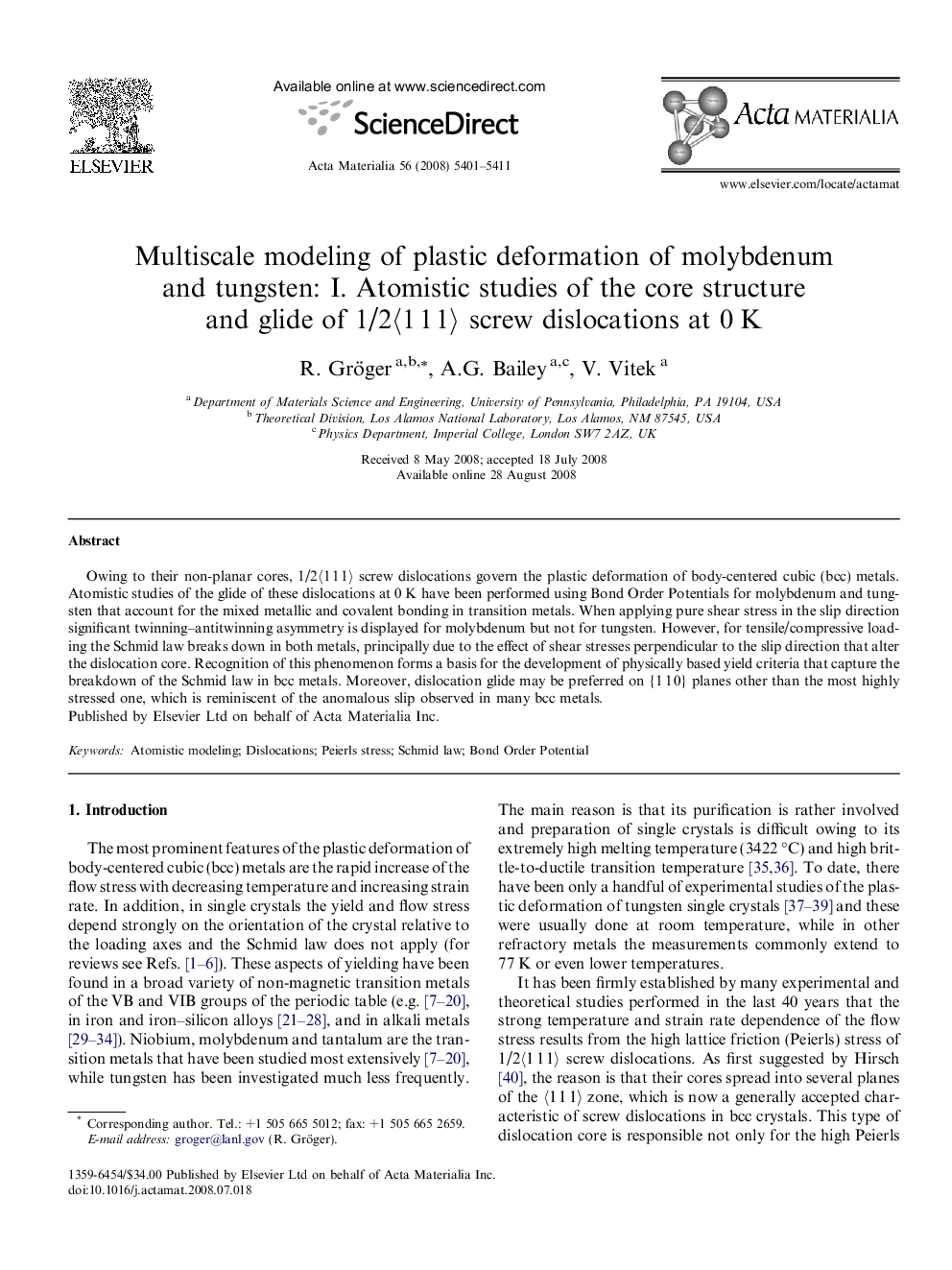| Article ID | Journal | Published Year | Pages | File Type |
|---|---|---|---|---|
| 1449799 | Acta Materialia | 2008 | 11 Pages |
Owing to their non-planar cores, 1/2〈1 1 1〉 screw dislocations govern the plastic deformation of body-centered cubic (bcc) metals. Atomistic studies of the glide of these dislocations at 0 K have been performed using Bond Order Potentials for molybdenum and tungsten that account for the mixed metallic and covalent bonding in transition metals. When applying pure shear stress in the slip direction significant twinning–antitwinning asymmetry is displayed for molybdenum but not for tungsten. However, for tensile/compressive loading the Schmid law breaks down in both metals, principally due to the effect of shear stresses perpendicular to the slip direction that alter the dislocation core. Recognition of this phenomenon forms a basis for the development of physically based yield criteria that capture the breakdown of the Schmid law in bcc metals. Moreover, dislocation glide may be preferred on {1 1 0} planes other than the most highly stressed one, which is reminiscent of the anomalous slip observed in many bcc metals.
